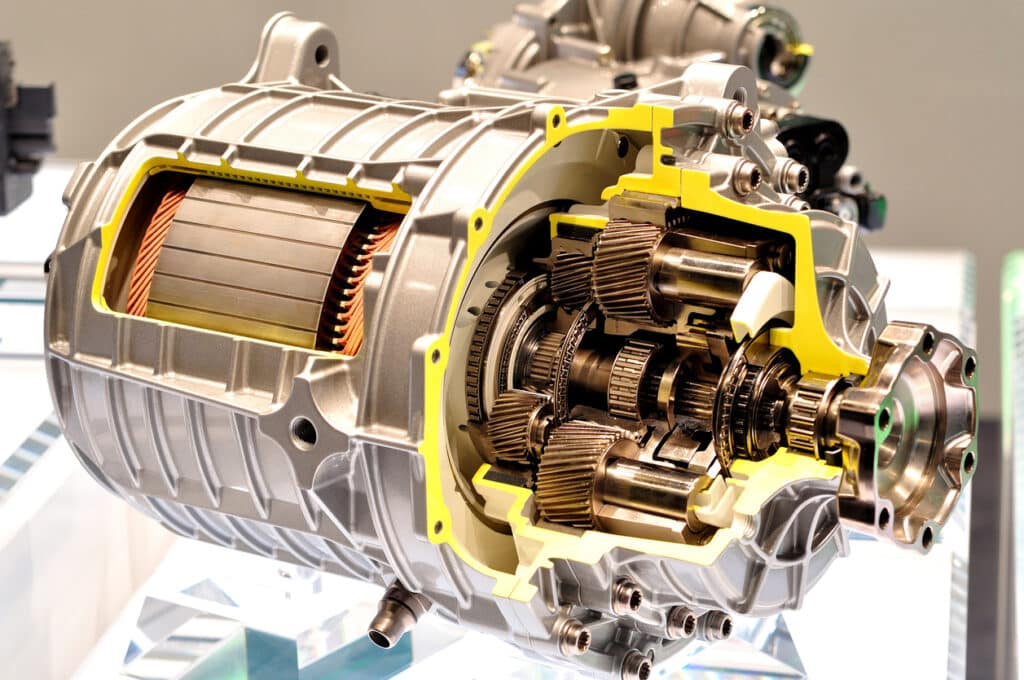Electric cars are well and truly here, with the number of EVs on UK roads growing by over 40% year on year. That’s all well and good, but what are these next-gen vehicles like to maintain? And which fluids do they need to keep them in tip-top shape?
If you’re thinking of purchasing an electric car, it’s wise to find out what they’re like to live with before you buy. While most people tend to focus on battery life and range, thinking about the kind of maintenance and servicing they need – and what this is going to cost – is essential too.
In this post, we’ll be offering a complete guide to all the vehicle fluids required by electric cars, along with some tips and advice for hassle-free EV maintenance.
What Fluids Do EVs Use?
One of the major plus points of EVs is that they require a lot less maintenance than their ICE (internal combustion engine) counterparts. But that’s not to say that you don’t need to maintain them at all, and some cheaper EVs actually require a comparable amount of maintenance to their petrol and diesel cousins.
Of course, a large part of maintaining traditional cars centres around changing fluids such as oil and coolant. But is this the same for EVs?
Not quite. Here are some of the fluids you’ll need to keep an eye on as an electric car owner.
Battery Coolant
EVs with liquid-cooled motors require coolant just like standard petrol and diesel cars. However, rather than keeping a big old combustion engine cool, EV coolant has a slightly different job: battery cooling.
Dissipating heat from EV batteries is arguably the most important function beneath the bonnet. Without coolant, these units would rapidly overheat with potentially devastating consequences.
The interval at which you need to check and potentially change EV coolant differs from model to model. Indeed, some EVs like the Tesla Model 3 never require a coolant change, while other brands such as Mercedes-Benz recommend a fluid service schedule equivalent to 124,000 miles.
At the other end of the electric car scale, however, brands like Hyundai and Kia suggest a coolant service interval of 80,000 miles, which is comparable to premium-brand coolants used in petrol and diesel cars.
If you’re wondering whether you can change your EV’s coolant yourself, we’d recommend leaving this to the pros. That’s because these systems are totally sealed, with specialist tools required to open them. Always check with the manufacturer before replacing the coolant in your electric car, as you could void the battery warranty by using the wrong type of fluid.
With that said, most electric cars with liquid-fed cooling systems use glycol-based coolants, just like regular petrol and diesel models. However, it’s always best to check with the vehicle manufacturer first as some EV’s can only use a low-conductivity coolant.

Transmission Fluid
We know what you’re thinking: EVs don’t have gears, so why do they need transmission fluid?
It’s a reasonable question. However, EV motors do still interact with a gearbox-style system, so transmission fluid is required to make sure these moving components interact as efficiently and with as little friction as possible.
Granted, there are far fewer moving parts in an EV transmission system than in ICE vehicles, so you don’t need anywhere near as much transmission fluid to keep things working as they should. Nor is the recommended service interval quite so regular, with some models – including the aforementioned Tesla – requiring zero transmission fluid checks and maintenance whatsoever.
As with battery coolant, the service interval for transmission fluid does vary depending on the make and model of your electric car. Nissan, for example, recommends changing the fluid every 120,000 miles, while this is reduced to 80,000 miles for Hyundai and Kia EVs.
Brake Fluid
While some EV components are wholly unlike those found on ICE cars, some are virtually identical. That’s pretty much the case with brake fluid, with EVs using similar systems to those found on the most modern petrol and diesel cars.
Even on EVs, brake systems are still powered by hydraulic fluid, which sends power from the brake pedal to the wheels. That’s despite electric cars benefiting from regenerative braking, a feature that recycles power from decelerative force to send power to the battery.
With some EVs, you’ll need to check and replace the brake fluid in line with the manufacturer’s recommended service schedule. Again, this will depend on the model, but most EV makers suggest a two-year check cycle to ensure the brakes are in the best and safest condition.

Screen Wash
Last but not least, EVs need good old screen wash just like their ICE-powered cousins. We’d recommend using a premium-quality screen wash where possible to ensure maximum visibility and zero glare out on the road.
What Fluids Do EVs Not Use?
So, to recap, it’s useful to take a look at the fluids that electric cars don’t need. These include:
- Engine oil: No engine and minimal moving parts mean that EVs require zero motor oil, so gone are the hassle and expense of those annual oil changes.
- Power steering fluid: Just like modern, high-end petrol and diesel cars, EVs don’t need power steering fluid since they have fully electric power-assisted steering. One less thing to worry about!
Has this helped you get to the bottom of what fluids electric cars need? You’ll find other helpful guidance and advice on the Prestone blog. Alternatively, tap here to browse and buy our complete range of high-performance motoring fluids.

